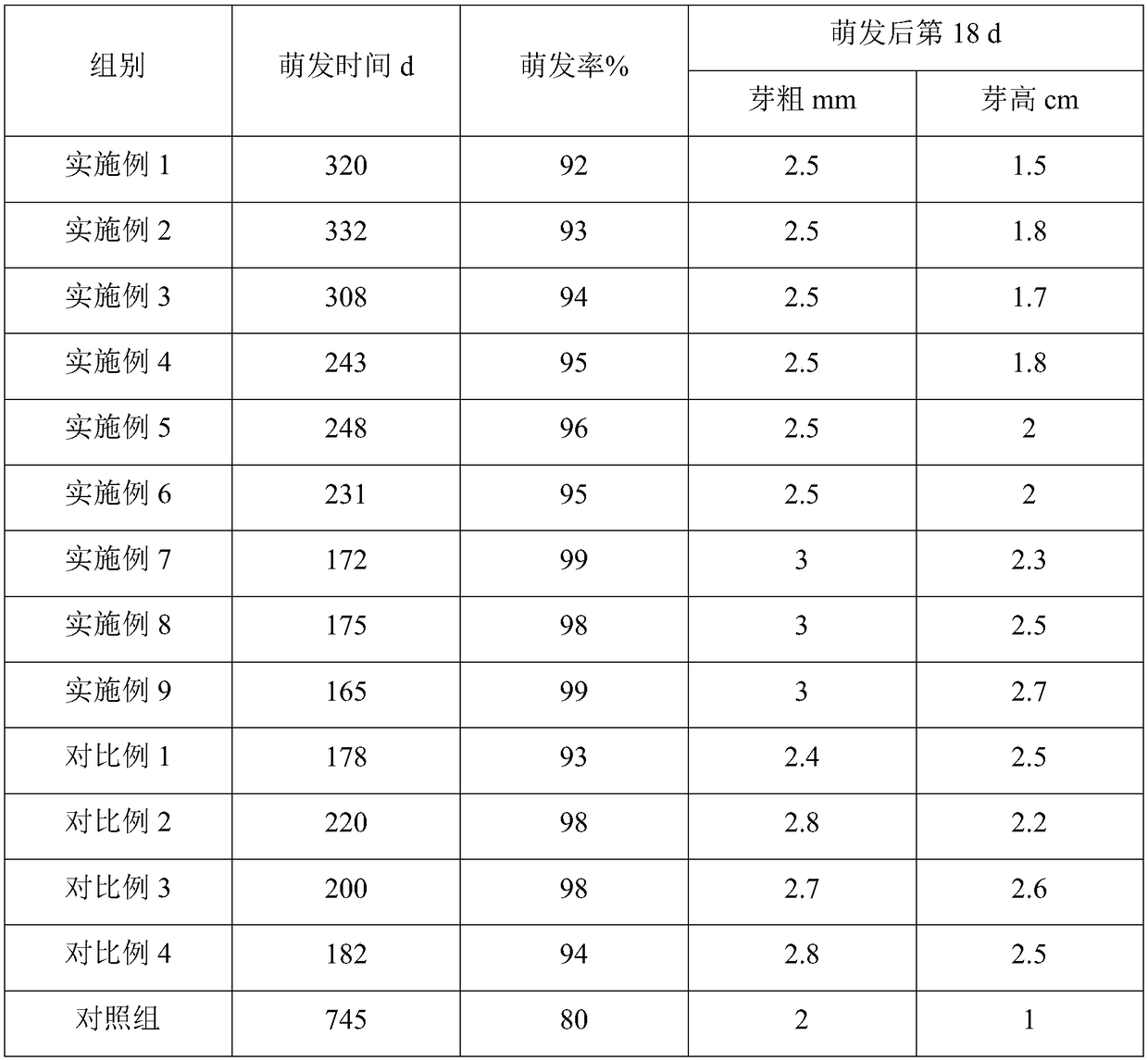Seedling growing method for breaking dormancy of Radix Tinosporae seeds
A technology of Lavender quinquefolium and seeds, applied in the direction of seed immunization, seed and rhizome treatment, botanical equipment and methods, etc., can solve the problems of shortening the germination time of Lavender quinquefolium seeds and not being so effective
- Summary
- Abstract
- Description
- Claims
- Application Information
AI Technical Summary
Problems solved by technology
Method used
Image
Examples
Embodiment 1
[0029] The method for raising seedlings that breaks the dormancy of Lavender oleracea seeds comprises the following steps:
[0030] Step 1, soaking the quingoola seed kernels from which the seed coat has been removed is 60% sulfuric acid solution for 5 minutes, and then washing them with tap water;
[0031] Step 2. Put the treated Lamella quinquefolium kernels in step 1 and refrigerate them at 2°C for 15 days, then wrap them in moist river sand and place them at 15°C for 5 days, then take out the Lamosa quinquefolium seeds and store them at 4°C Refrigerate for 15 days;
[0032] Step 3: Disinfect and accelerate the germination of the Lamula quinquefolium seed kernels treated in step 2, and transplant them to the seedbed after the quinquefolius quinquefolium seed kernels germinate.
Embodiment 2
[0034] The method for raising seedlings that breaks the dormancy of Lavender oleracea seeds comprises the following steps:
[0035] Step 1, soaking the quingoola seed kernels from which the seed coat has been removed is 60% sulfuric acid solution for 6 minutes, and then washing them with tap water;
[0036] Step 2. Put the treated Lamella quinquefolium seeds in step 1 and refrigerate them at 4°C for 20 days, then wrap them in moist river sand and place them at 25°C for 10 days. Refrigerate for 20 days;
[0037] Step 3: Disinfect and accelerate the germination of the Lamula quinquefolium seed kernels treated in step 2, and transplant them to the seedbed after the quinquefolius quinquefolium seed kernels germinate.
Embodiment 3
[0039] The method for raising seedlings that breaks the dormancy of Lavender oleracea seeds comprises the following steps:
[0040] Step 1, soaking the quingoola seed kernels from which the seed coat has been removed is 60% sulfuric acid solution for 5.5 minutes, and then washing them with tap water;
[0041] Step 2. Put the treated Lamella quinquefolium seeds in step 1 and refrigerate them at 3°C for 18 days, then wrap them in moist river sand and place them at 20°C for 8 days, then take out the Lambus quinquefolium seeds and store them at 5°C Refrigerate for 18 days;
[0042] Step 3: Disinfect and accelerate the germination of the Lamula quinquefolium seed kernels treated in step 2, and transplant them to the seedbed after the quinquefolius quinquefolium seed kernels germinate.
PUM
 Login to View More
Login to View More Abstract
Description
Claims
Application Information
 Login to View More
Login to View More - R&D
- Intellectual Property
- Life Sciences
- Materials
- Tech Scout
- Unparalleled Data Quality
- Higher Quality Content
- 60% Fewer Hallucinations
Browse by: Latest US Patents, China's latest patents, Technical Efficacy Thesaurus, Application Domain, Technology Topic, Popular Technical Reports.
© 2025 PatSnap. All rights reserved.Legal|Privacy policy|Modern Slavery Act Transparency Statement|Sitemap|About US| Contact US: help@patsnap.com

